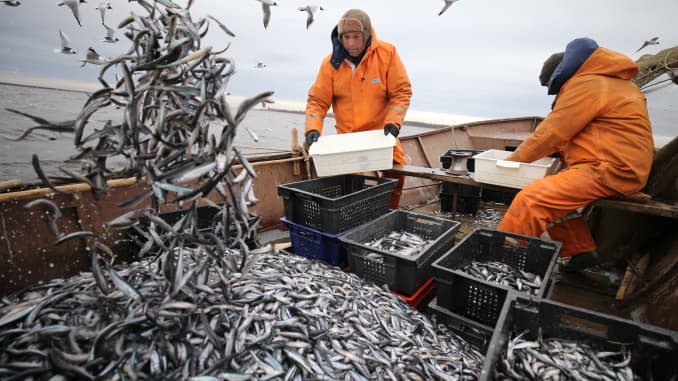When filmmaker Ali Tabrizi started investigating the practice of whaling to better understand the issue of marine pollution, it was impossible to foresee the myriad of issues that would be unravelled in the process. The new Netflix documentary Seaspiracy was the result. The 90 minute exposé tracks a complex web of large scale marine pollution as a result of industrial fishing. However, a variety of interconnected issues are revealed in the process. This includes the worrying figures of marine life sacrificed as a result of bycatch, the questionable veracity of dolphin safe labels on seafood, and the role of modern day slavery and human rights abuses going unnoticed in the fishing industry. The documentary was met by a mix of shock and disgust against criticism and controversy. As conflicting arguments abound perhaps the most lasting revelation of the documentary and following discussions is that marine pollution can no longer be ignored.
Most documentaries on marine pollution in recent years have focused on the role of domestic plastics that have entered our oceans and now are causing harm to various sea life. It has caused a shift in the use of plastics on a day-to-day basis. In the UK, new regulation came into force as of October 2020 which bans the sale of plastic straws, cotton buds and stirrers. Single use plastic was, it appeared, the crux of the issue. Seaspiracy contradicted this, diverting attention away from small scale domestic plastic use and towards the global industrial fishing industry which, the film argues, is the driving cause of marine pollution and harm. Delving deeper, the film reveals how major economies, global corporations, governments, and NGOs are playing a role in polluting our oceans, harming sea life and even contributing to human rights abuses. Seaspiracy accuses some of these organisations, including Oceana and the Marine Stewardship Council, of ignoring the real issue of industrial fishing to protect an industry they profit from. It is a compelling narrative that has shocked, saddened and emboldened viewers. Many have since followed the film’s suggestion and pledged to give up fish from their diet in response.

However, the film has been criticised by viewers, contributors, and experts alike. The International Marine Mammal Project and Marine Stewardship Council who create the dolphin safe labels questioned by Seaspiracy both said the film has done a disservice to the many organisations working to protect our oceans from the very issues they identified. Oceana has stated that their interview for the documentary was selectively edited. The organisation defends the work they continue to do against illegal fishing and towards science based fishing management. The US National Fishing Institute dismissed the film entirely as “vegan activist propaganda”.
The backlash has also pointed out various inconsistencies and errors in the documentary. Outdated statistics that have since been disproved were cited as evidence and two figures about bycatch were incorrect. Certain scientific processes were also confused. For a film that has been trending on Netflix in multiple countries, it is worrying that not all figures are factually correct.
So, what can be done to save our oceans? The film points viewers towards giving up fish from their diet. If done on a large scale the pressure to produce the quantities of fish that is currently causing such harm would be reduced and the industry may feel compelled to invest in legitimate sustainable processes to reaffirm confidence. However, this sentiment too has been met with controversy. Oceana points out that giving up fish is not a feasible choice for millions who rely on seafood for protein, sustenance, and their livelihood. Here it is important to point out that the documentary is presented to viewers who can afford a Netflix subscription and therefore one can assume in a privileged enough position to consider such a choice.
Seafish, the UK’s industry authority on seafood have responded to the documentary by affirming why consuming seafood in the UK is a positive choice. They draw on the health benefits fish can provide as well as the coastal communities that rely on the seafood industry to operate. Seafish also highlight the strict regulation and import controls in UK waters which have reduced fraudulent and criminal activity. However, they do acknowledge how the global seafood industry is by no means perfect with effort and investment required to resolve issues that persist.
With so many conflicting voices and authorities it is hard to tell where the true answer to marine pollution and conservation lies. Should efforts focus on single use domestic plastics or large-scale industrial fishing? Should we give up fish or would that cause further issues to communities that rely on the industry? Is this documentary the whistleblowing exposé we’ve been waiting for or a misleading dramatization of well intentioned activism? It seems the answers lie somewhere amongst the grey area in between. What can be assured is that the issue of marine pollution is not going away and will only get worse. For a global market valued at 159.31 billion dollars in 2019, there is no sweeping solution to the damage the seafood industry has and will continue to cause to our oceans and the life within them. It can also be acknowledged that a singular documentary maker is unable to exhaustively detail the nature of such an industry and its far-reaching consequences in a 90-minute film. But, at last the conversation has been ignited. Public awareness has been raised. And, hopefully, the complex, damaging, true nature of marine pollution can no longer be ignored.
Featured image credit: Getty Images

